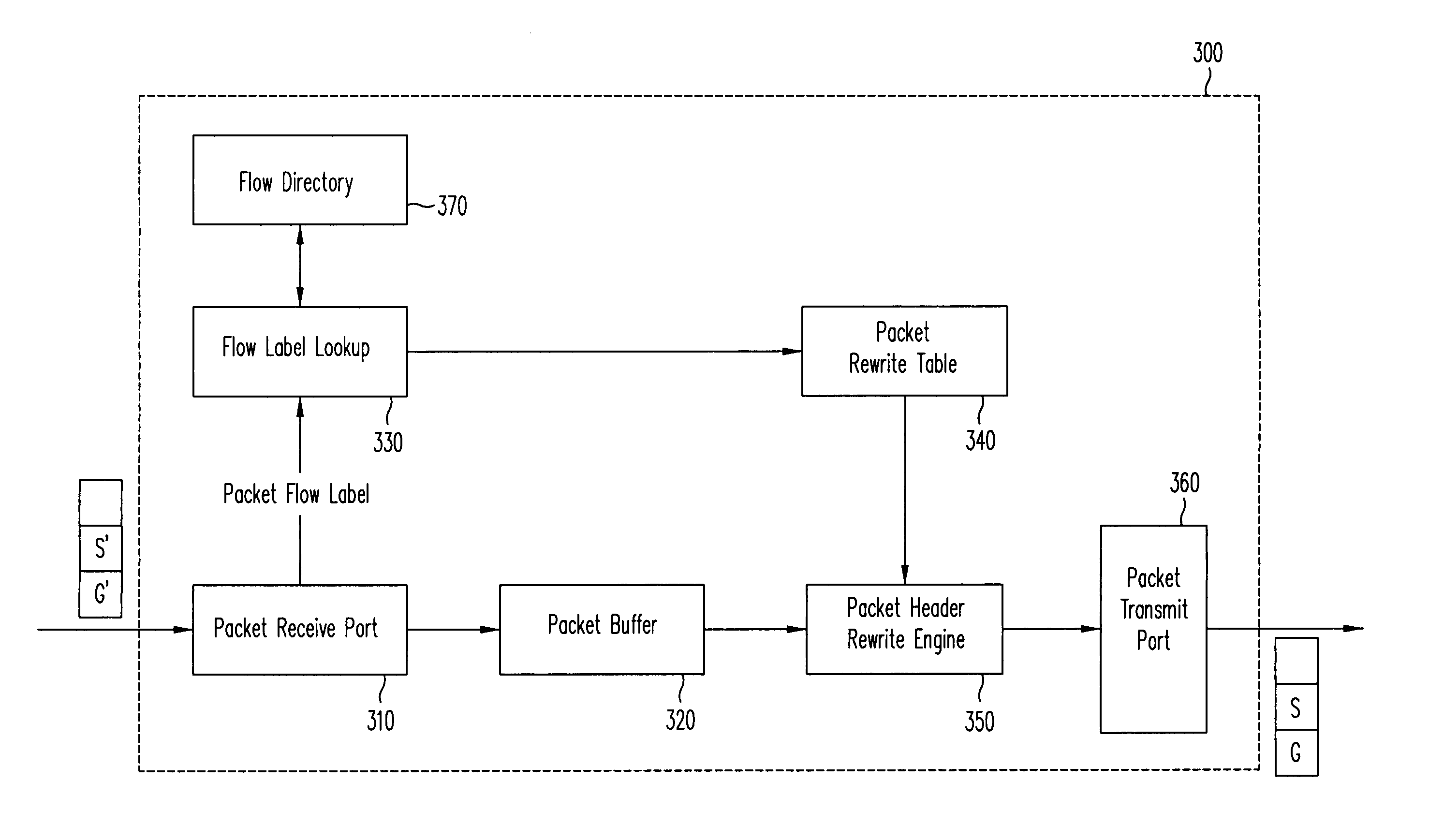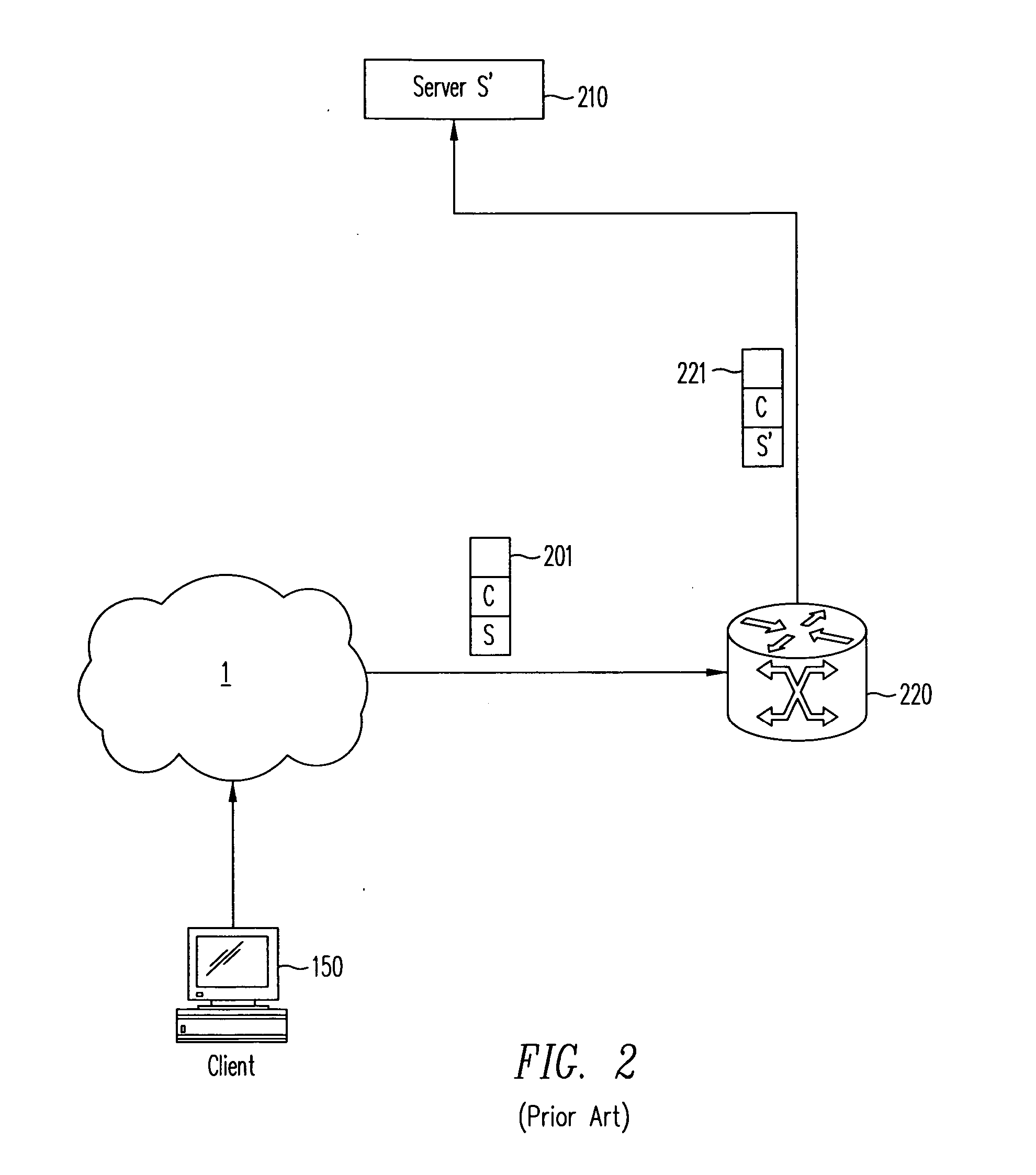Network address translation for multicast virtual sourcing
a network address and virtual sourcing technology, applied in the field of packet multicasting, can solve the problems of increasing processing complexity, slowing down, and increasing costs, and each is necessarily slowed, so as to achieve the effect of reducing processing complexity, reducing processing complexity, and reducing transmission speed
- Summary
- Abstract
- Description
- Claims
- Application Information
AI Technical Summary
Benefits of technology
Problems solved by technology
Method used
Image
Examples
Embodiment Construction
[0021] As a representative use of the present invention, consider the following situation: an Internet television station with a point of presence at an Internet Service Provider (ISP) headend allocates a virtual host address S and multicast address G for an Internet television channel. This address is identified as (S,G), denoting source S and subscriber recipient group G. Hosts that wish to receive this particular Internet television feed then subscribe to the multicast channel (S,G) in the conventional manner normally used in single-source multicast applications.
[0022] In prior art multicast systems, shown schematically in FIG. 1, packets multicast from source host 110 (a.k.a. source S) to group 115 (a.k.a. group G) are replicated by one or more routers 120, 130, and 140, all a representative part of the well-known Internet 1, and delivered to each subscribing client host 150. Each subscriber 150 within group 115 is said to be subscribing to the single-source multicast channel i...
PUM
 Login to View More
Login to View More Abstract
Description
Claims
Application Information
 Login to View More
Login to View More - R&D
- Intellectual Property
- Life Sciences
- Materials
- Tech Scout
- Unparalleled Data Quality
- Higher Quality Content
- 60% Fewer Hallucinations
Browse by: Latest US Patents, China's latest patents, Technical Efficacy Thesaurus, Application Domain, Technology Topic, Popular Technical Reports.
© 2025 PatSnap. All rights reserved.Legal|Privacy policy|Modern Slavery Act Transparency Statement|Sitemap|About US| Contact US: help@patsnap.com



